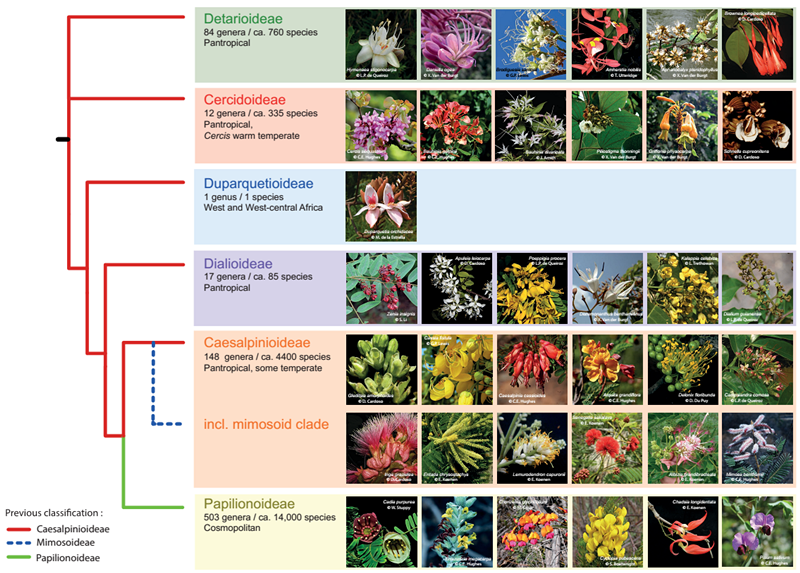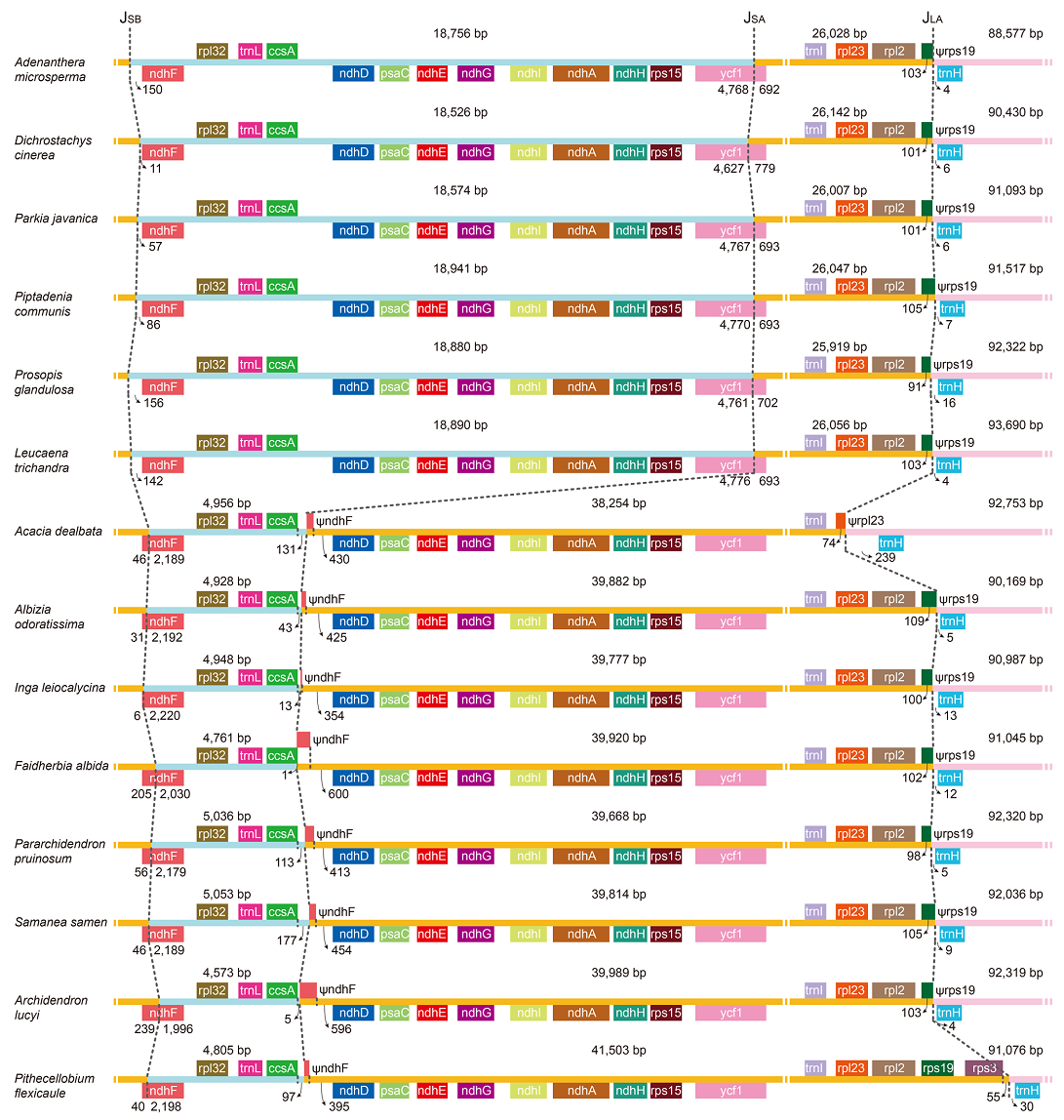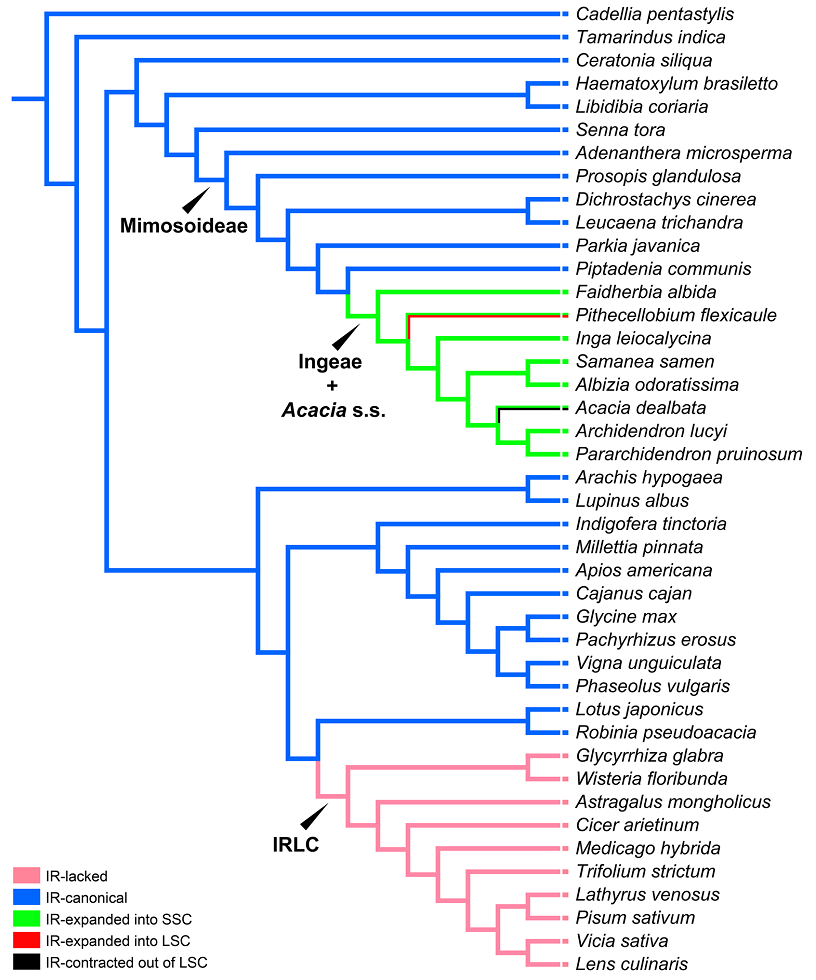
With ca. 765 genera and over 19,500 species, the Leguminosae is the third-largest plant family. Legumes have cosmopolitan distribution and extremely high variety of forms and habitats.
Economically, Leguminosae is second in importance only to Poaceae. Legumes are the most valuable plant protein sources in human diet, and even the only protein sources in some poor regions of the world.
About 88% of legume species have the ability of nitrogen fixation by root nodules and provide biological nitrogen for agriculture and natural ecosystems. Use of green nitrogen fertilizers can reduce the consumption of chemical nitrogen fertilizers and, in turn, improve ecosystem services, especially the global nitrogen cycles.
Traditionally, the Leguminosae was divided into three well-known, long-recognised and widely accepted subfamilies, Caesalpinioideae DC., Mimosoideae DC., and Papilionoideae DC, even three independent families, Caesalpiniaceae, Mimosaceae, and Papilionaceae (Fabaceae).
Herbaria, floras, field guides, and other taxonomic literature are universally arranged according to the three subfamilies or families.
Recent molecular studies indicate that the classification of legumes into three subfamilies is not natural because the monophyletic Mimosoideae and Papilionoideae are nested within a paraphyletic Caesalpinioideae.
As a member of the Legume Phylogeny Working Group (LPWG), Prof. YI Tingshuang from Kunming Institute of Botany (KIB), Chinese Academy of Sciences participated in proposing a new community-endorsed classification of the Leguminosae which recognised six subfamilies: a recircumscribed Caesalpinioideae DC., Cercidoideae LPWG, Detarioideae Burmeist., Dialioideae LPWG, Duparquetioideae LPWG, and Papilionoideae DC.
This new classification was based on phylogenetic analysis of plastid matK gene sequences with near-complete sampling of genera (ca. 91% of the currently recognised genera and ca. 20% of known species), and morphological data were also applied to define these subfamilies.
The new classification would be important not just within the legume taxonomic community but also for the legume biology, genomics, and indeed the wider evolutionary biology community as a whole.
This study entitled “A new subfamily classification of the Leguminosae based on a taxonomically comprehensive phylogeny” is published in Taxon.
The Leguminosae is one of a few angiosperm lineages whose plastomes experienced extremely structural variation.
Previous studies commonly believe that only plastome of the subfamily Papilionoideae experience significant structural variation, whereas the other two subfamilies (the traditional subfamilies of Caesalpinioideae DC., Mimosoideae DC.) have conserved plastome structure as those of most angiosperms.
However, plastome structural variation was detected in the traditional subfamily Mimosoideae, now mimosoid clade in two lately studies.
The research group of Prof. YI Tingshang, together with Prof. LI Dezhu and WANG Hong’s groups from KIB studied the plastome variation of 14 mimosoids (representing 14 genera and 3 tribes), they found out, firstly, the previously reported ca. 13 kb expansion of inverted repeat (IR) into small single-copy region (SSC) is universally presented in species of tribe Ingeae and Acacia s.s., which should be synapomorphy of the Ingeae + Acacia s.s. clade; secondly, IR expansion into and contraction out of LSC, clpP duplication and loss of introns, and rps18 inversion occur in some species; synonymous substitution rate decreased after genes relocated to IR.
Furthermore, they found variety of sequence divergences in mimosoid plastomes, and plastid phylogenomics could efficiently resolve phylogenetic relationships of mimosoid species.
This research is fundamental to further phylogenomic studies of mimosoid clade even the whole Leguminosae. This study entitled “Plastomes of Mimosoideae: structural and size variation, sequence divergence, and phylogenetic implication” has been published in Tree Genetics & Genomes.
Those studies were funded by the Ministry of Science and Technology of China, through a Basic Research Project, National Key Basic Research Project, andthe Talent Project of Yunnan Province.

Figure 1. The six-subfamily classification of the Leguminosae (Image by KIB)

Figure 2. Expansion/contraction of inverted repeat (IR) in mimosoid plastomes (Image by KIB)

Figure 3. The evolutionary pattern of IR expansion/contraction in legume plastomes (Image by KIB)

86-10-68597521 (day)
86-10-68597289 (night)

52 Sanlihe Rd., Xicheng District,
Beijing, China (100864)

